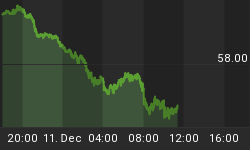Dear reader
EMphase Finance is proud to launch its new research service US Economics Monthly. The goal of this publication is to provide in an executive format a clean, clear and concise overview of the US economy for both private and institutional clients.
US Economics Monthly contains the finest collection of economic indicators available online. These indicators are displaying relationships between each economic variable. Moreover, they allow our readers to "watch the forest as a whole and not the trees".
Please note the publishing format is still under review and more content will be added soon. For example, we will add a page for investment, external and financial indicators. Please do not hesitate to send us your feedback to improve our research.
US Economics Monthly will be published for free over the next months. We will add next month a mailing list on our website for the readers interested in receiving US Economics Monthly directly by email. We will also update our website to reflect what we do now.
Anticipatory Indicators
- These indicators provide the most forward looking picture of the economy.
- They are leading the CB LEI, ISM, volatility, confidence, stock market, etc.
- The Fed will keep Fed fund rate at 0.25% until unemployment falls back (1).
- Recovery is underway. Economy will improve in the next two quarters (2)(3)(4).
- S&P 500 earnings will improve in tandem with the economic recovery (5).
- We believe NBER will retroactively mark the end of recession on Q2 2009 (6).

Output Indicators
- We are forecasting the Q/Q annualized GDP to turn positive before 2010 (1).
- All four leading indicators are unanimously calling for real GDP recovery with a target average of 0% Y/Y within the next three quarters (2)(3)(4)(5).
- Investors are displaying risk seeking behaviors as the economy improves. Many fund managers missed the rally from 6th March. As the S&P 500 climbs higher, they are supporting it by chasing momentum sectors and high beta stocks (6).

Consumption Indicators
- Cash for clunkers, first-time home buyers' tax credit and the increase of net worth all contributed to high consumer confidence. Retail sales should remain strong which will damper savings rate until the end of 2009 (2)(3).
- Government intervention will recede in 2010 as consumer confidence keeps improving (4). It is a good sign because Econometrician Roberto Perotti proved empirically each $1 increase in public spending reduces private spending by $1.

Employment Indicators
- Payrolls declined to -263K in September. Yes, there is no such thing as a jobless recovery and the data is still disappointing but we recommend being patient as payrolls are set to gradually recover over the next three quarters (1)(2)(3).
- Unemployment rate jumped to 9.8% in September, its highest level in 26 years. Our three indicators are suggesting unemployment will at least stabilize and most likely fall in early 2010 as companies will start hiring again (4)(5)(6).

Real Estate Indicators
- The housing price turnaround in April 2009 marks the stabilization of real estate. Both FHFA and S&P Case Shiller housing prices are increasing since then (1).
- As existing home sales monthly supply falls, housing price should adjust accordingly. Affordability is highest due to low prices and mortgage rates (1)(2).
- It is reasonable to expect home sales to stop advancing and even fall back after the first buyers' tax government program ends in December 2009 (3)(4).

Inflation Indicators (Part 1)
- It is quite clear inflation will not show up on the CPI core as all four indicators suggest the CPI core will fall between 0.5% and 1.0% Y/Y by 2011 (1)(2)(3)(4).
- There is no sign of inflation on the CPI food Y/Y (5). However, the energ-ent (energy-emergent) need will support commodities and boost CPI energy Y/Y (6).
- Consequently, we should focus on CPI energy Y/Y and CPI all Y/Y instead of looking at the CPI core Y/Y to perceive signs of inflation.

Inflation Indicators (Part 2)
- CPI all Y/Y is still at its lowest level (1) but the CPI all Q/Q Ann. is now at 4.8% as of August (2). This turnaround is quite impressive and cannot be ignored!
- By following relationships seen on charts (3)(4)(5), we could forecast CPI all Y/Y to surge and eventually materialize the yearly number of CPI all Q/Q Ann.
- The return of inflation is good for the stock market and gold as long as it remains under control. However, double dip recession risk depends on the Feds' stance.

Sources
BB, BC, BEA, BLS, CB, CBO, CBOE, ECRI, FHFA, FRB, ISM, MC, NAHB, NBER, S&P.
















